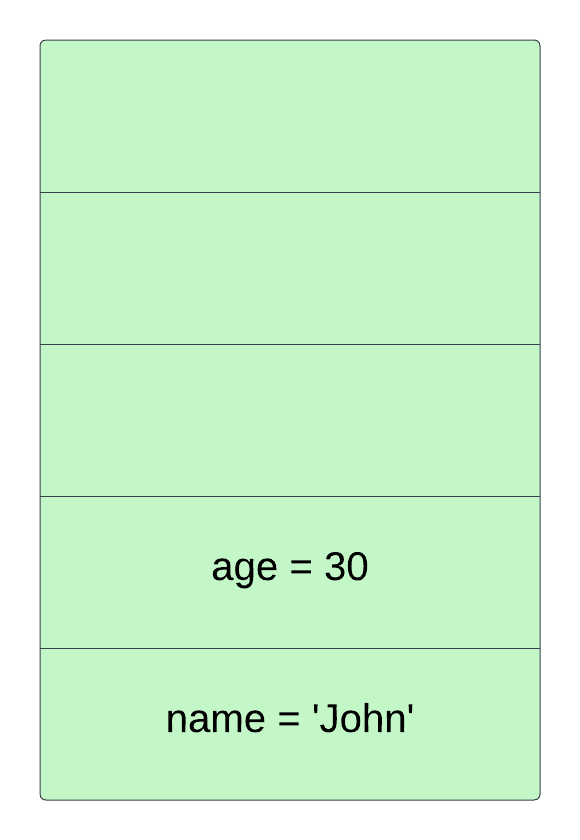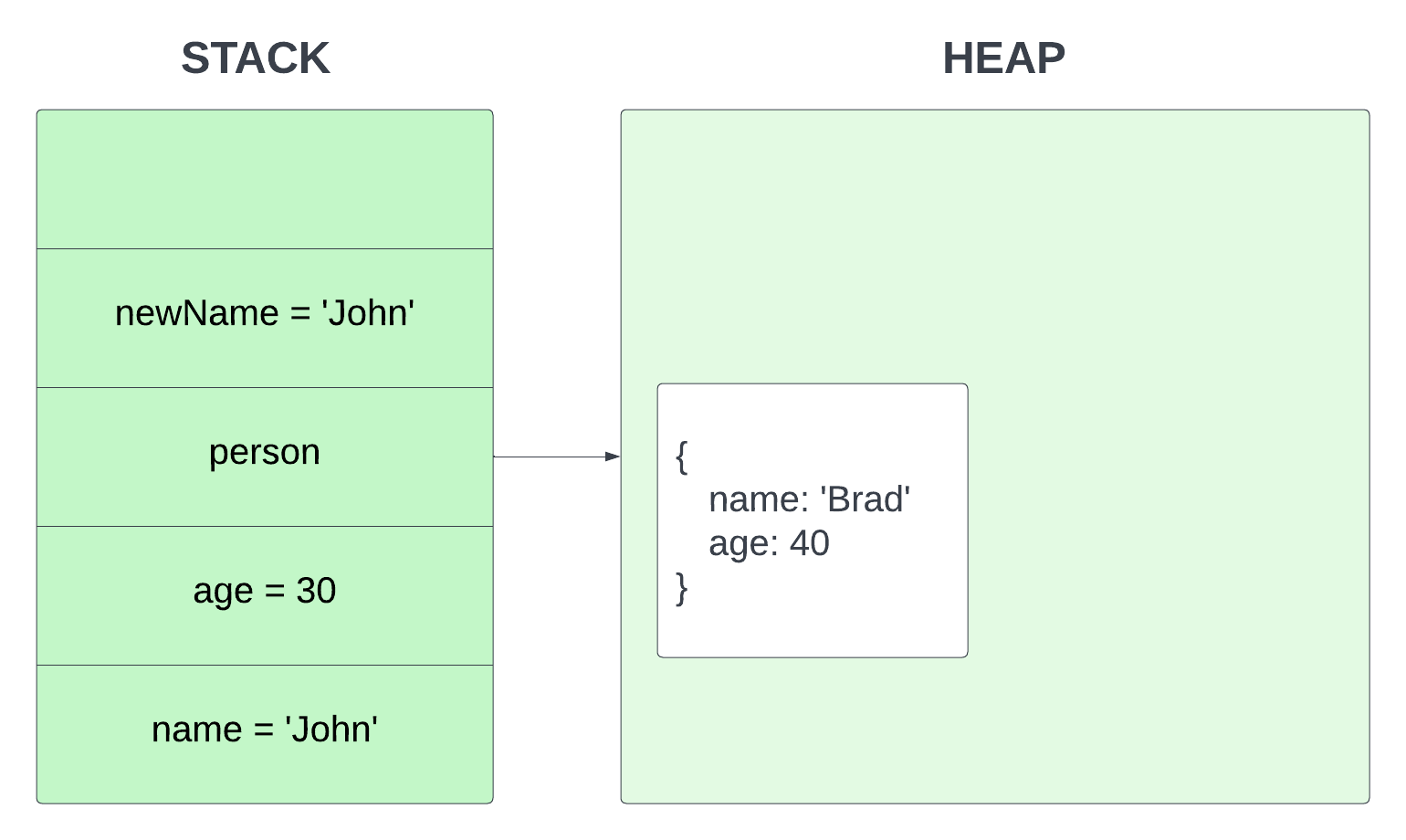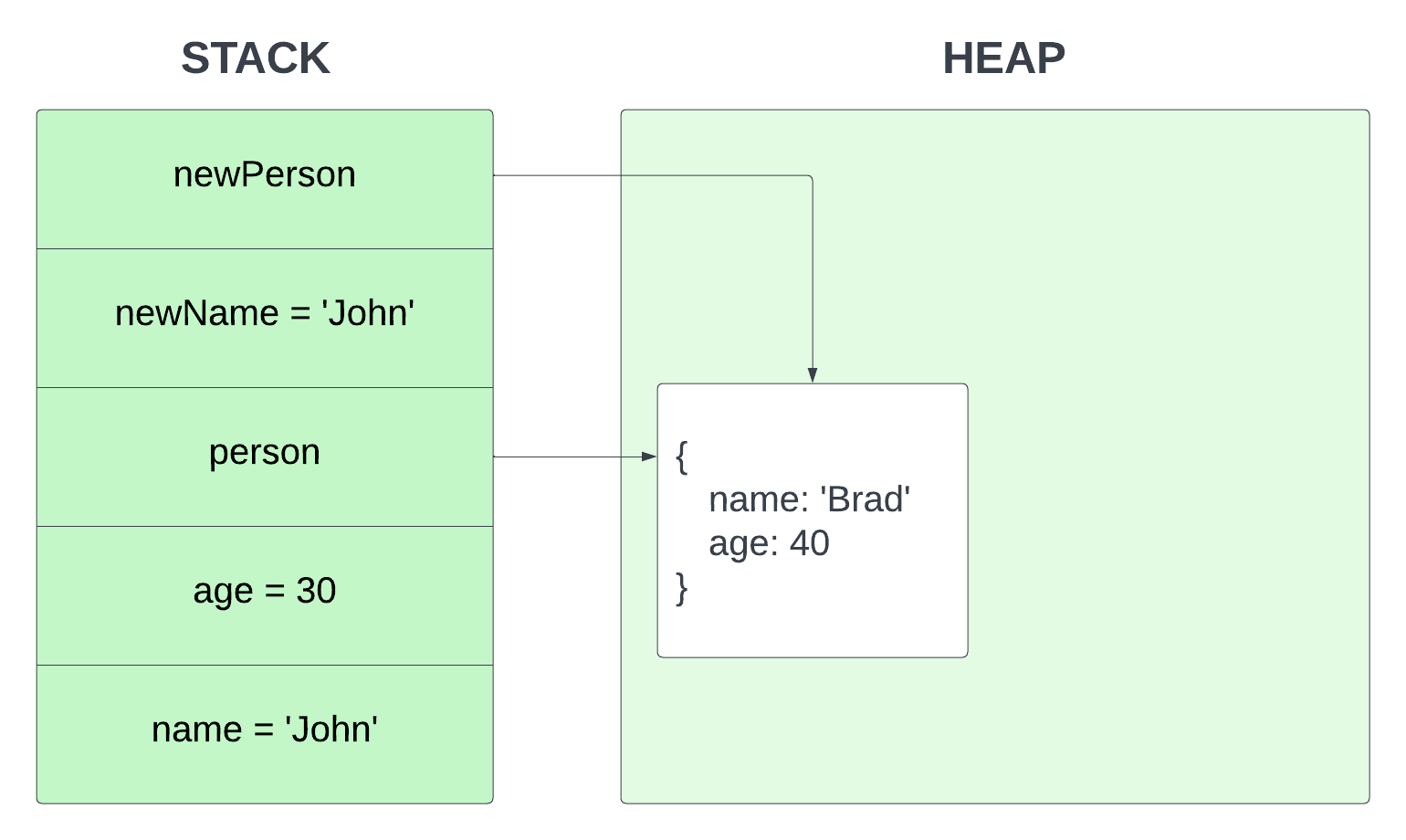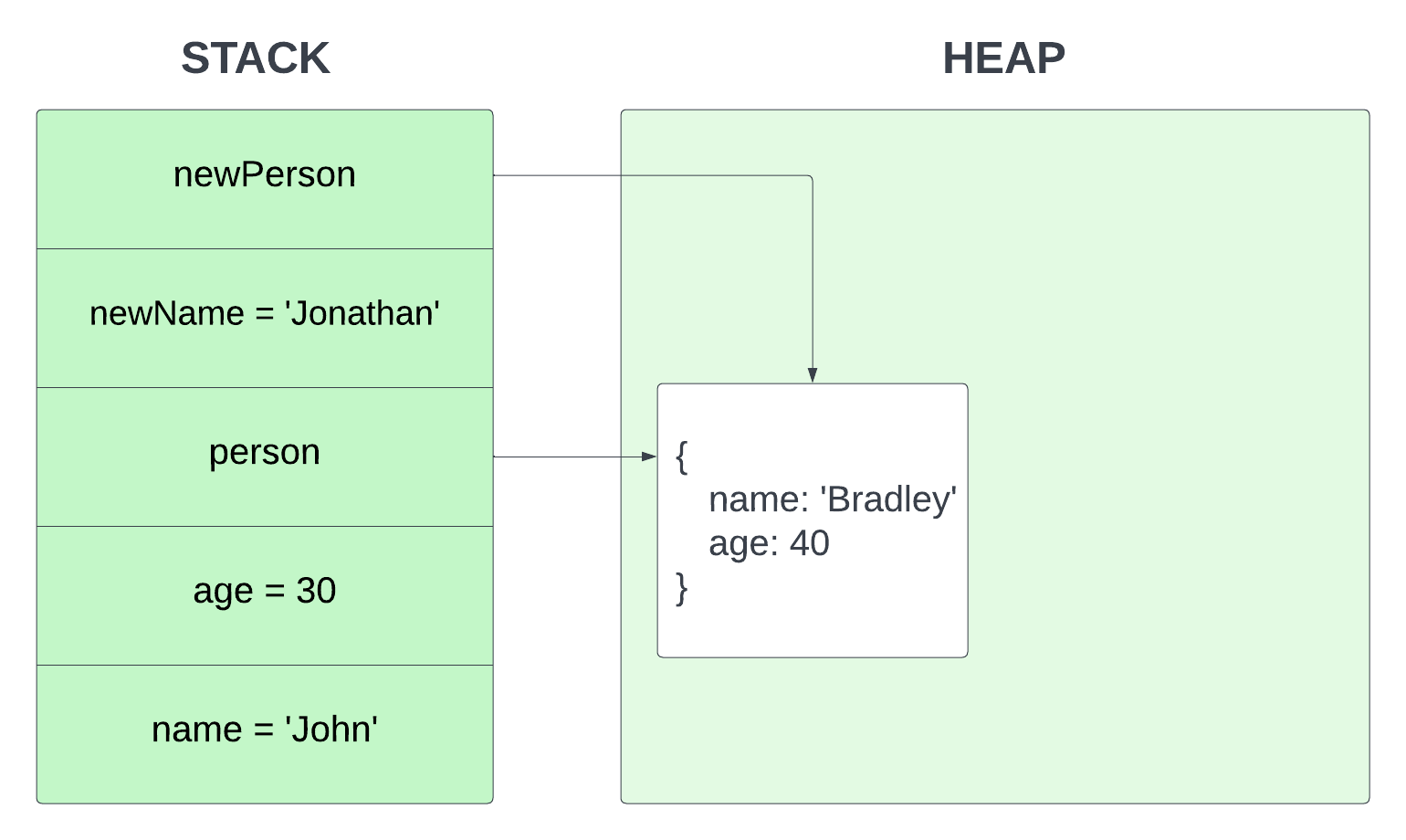Stack vs Heap Memory Allocation
Now we're going to look at how primitive and reference type data is stored in memory. One thing I really want to mention is that if you're a beginner or even intermediate, this may seem a little confusing but that's absolutely fine. In all honestly, I have met senior developers that don't know some of this stuff, so don't let this overwhelm you.
What's really important right now is that you just know the types and know how to create variables. I was iffy on even talking about some of this stuff at this point, but I want to this to be a very thorough course. You can always just take in the basics and come back to these videos later. And I'll do my best to let you know what is really important for the day to day and what is more behind the scenes knowledge.
Garbage Collection
Before we look at how data is stored in memory, I just want to mention that JavaScript uses something called garbage collection. With some low-level languages such as C and C++, you actually have to manage your own memory. When you create variables, you have to allocate the memory yourself and when you are done, you need to free up that space. It makes programming much more difficult. More modern interpreted languages like JavaScript and Python, do not have you do this. It is automated with something called garbage collection. That's why you don't technically need to know how this stuff works to start writing JavaScript.
Memory Allocation
When we create a variable, the JavaScript engine allocates them into two different locations called the stack and the heap.
Primitive values like strings, numbers, etc are static and immutable data that are fixed. Because of this, the size of the data doesn't change at all, so the space is allocated as a fixed amount and is stored on the stack.
So let's take the following example
const name = 'John';
const age = 30;To help visualize this, I created a simple image of what the memory stack would look like

Notice that the memory was allocated on the stack for the variable and the value for name and age. This is because they are static primitive values.
Now let's create a person object
const person = {
name: 'Brad',
age: 40
}Since this is a reference type that is not static and we can add and remove values from it, the object gets stored in the heap

Lets set a new variable called newName to reference the primitive name variable
const newName = name;Under the hood, JavaScript copies the primitive value of 'John' and assigns it to newName

Now, let's change the value of the newName to Jonathan
newName = 'Jonathan'
The name value stays the same and only the newName is changed. That's because it was passed by the value.
Now lets create a new variable called newPerson and set it to person
const newPerson = person;Now the newPerson variable references the same value on the heap.

If I were to update newPerson object's name value
newPerson.name = 'Bradley'It would change the reference in the heap as well and now both person and newPerson will have the name Bradley. This is because it is passed by reference.

So at some point, this knowledge will come in handy when you get into more advanced programming. It's not really beginner stuff, but I do think learning it now gives you a leg up.